- Home
- Alison Weir
Queen Isabella: Treachery, Adultery, and Murder in Medieval England Page 11
Queen Isabella: Treachery, Adultery, and Murder in Medieval England Read online
Page 11
The King had already hastened south, but the Queen stayed in York until the end of July, when her husband sent an escort to conduct her to Westminster.14 He himself was then in London, taking counsel of his loyal advisers as to what action he should take against Gaveston’s murderers. Pembroke and Surrey were urging him to declare outright war on these “traitors,”15 and certainly for a time it appeared that Edward was preparing for a military confrontation. Late in June, he called on the Lord Mayor of London to hold the City for him,16 and he spent July and August securing his position, summoning levies, fortifying castles, and putting his defenses in order.17 During August, he sent Pembroke to King Philip and the Pope to inform them of the critical situation in England and ask for help.
However, when Parliament met at Westminster on 20 August, its main concern was to establish a peace process. But on 3 September, in defiance of the King, Lancaster, Warwick, and Hereford marched on London in arms18 and unrepentant, determined to face down their master; they were stopped at Ware and forbidden to enter the City.19
As far as Lancaster in particular was concerned, the removal of Gaveston had been merely the first step toward limiting the King’s power to the extent that he would become Lancaster’s puppet. The Earl was determined to force Edward to observe the Ordinances, be he ever so hostile to them. Edward, for his part, wanted Lancaster and Warwick tried, condemned, and executed.20 Only the mediation of Gloucester averted a military confrontation.21 Isabella was not there to support Edward through this contretemps; she had to travel slowly because of her pregnancy and did not return to London until 9 September.22 This was the first time she had seen the King since Gaveston’s death, and it cannot have been an easy reunion.
Philip IV, spurred on by news of the murder of the favorite and hope that Isabella was carrying a prince, responded to Edward’s request by sending Evreux once more to England, with a team of lawyers, to help bring about a peace between the King and his barons. The Pope, too, sent legates to assist in this process. After Evreux arrived in the middle of September23—he dined with Isabella on the fifteenth24—negotiations were opened. Isabella played her part, supporting Gloucester, the legates, and the bishops in their efforts to bring about a reconciliation,25 but progress was slow, since feelings ran high on both sides, and the parleying went on for many weeks.26 Amid this uproar, various rumors were “flying hither and thither, as one man foretold peace, his neighbour war.”27
When Isabella was seven months pregnant, she retired to Windsor, where her child was to be born.28 There she was joined by Queen Marguerite, who stayed to be present at the birth.29
Windsor Castle was the largest royal stronghold in England; there was “no finer castle in the whole of Europe.”30 The original fortress had been built by William the Conqueror in the late eleventh century to protect the Thames Valley, but it had been enlarged and rebuilt by several kings since. In Isabella’s time, Windsor was both a mighty castle surrounded by massive stone walls and a sumptuous palace. There were two wards within the castle walls: the Lower Ward, in which stood the great hall erected by Henry I, and the Upper Ward, where were to be found the private royal apartments and chapels in “the King’s House” as well as a lesser hall and the King’s kitchen. The Upper Ward was sited at the top of the escarpment on which the castle stood and commanded fine views of the surrounding countryside.
As at Westminster, the royal apartments had been extensively refurbished and improved under Henry III. The Queen’s lodgings, which had been rebuilt in 1256 following the destruction of an earlier range by lightning, were on the first floor and overlooked the herb gardens in the cloistered kitchen court. They featured an oriel window and a turret. The rooms were brightly decorated: archaeological evidence shows that the stonework in the windows was painted vermilion, red ocher, and black and that there were extensive murals of biblical subjects; in Isabella’s chamber, there was a wall painting depicting the Wise and Foolish Virgins, while the wainscot was painted green with gold stars. There were marble pillars, stained-glass casements in the windows, ceilings of traceried wood, and tiled floors. Isabella’s private chapel was two-storied, her pew being on the upper gallery, which was accessed directly from her apartments; her household worshipped below.31
In the Lower Ward was the chapel dedicated to Saint Edward the Confessor, founded by Henry III in 1240. This was demolished, along with the great hall, in the late fifteenth century, when Saint George’s Chapel was built on the site. Henry III’s chapel had a timber vault painted to look like stone, and six columns of Purbeck marble; the west doors, with their splendid iron scrollwork, still survive in Saint George’s Chapel. On the altar was a silver-gilt image of the Virgin Mary and another of Saint George in armor.32
The King joined Isabella at Windsor in the middle of September, probably bringing her uncle of Evreux with him, and departed on 25 October. He did not stay away long but returned on 30 October, presumably expecting the birth to be imminent; however, when nothing happened, he went away again on 9 November. Three days later, Isabella’s labor began, and he came hurrying back.33 At 5:40 the next morning, Monday, 13 November 1312,34 which was Saint Brice’s Day, the Queen gave birth to a strong, “handsome and long-looked-for son.”35 The King was so delighted that he bestowed £20 and a substantial life pension of £80 per annum from London rents on the Queen’s squire, John Launges, and his wife, Joan, who brought him the joyful news.36
Hours after the birth, following the custom whereby the Queen herself announced the birth of an heir, a triumphant Isabella had the glad tidings proclaimed in London:
Isabella, by the grace of God, Queen of England, Lady of Ireland and Duchess of Aquitaine, to our well-beloved the Mayor and aldermen and the commonalty of London, greeting. Forasmuch as we believe that you would willingly hear good tidings of us, we do make known to you that our Lord, of His grace, has delivered us of a son, on the 13th day of November, with safety to ourselves, and to the child. May our Lord preserve you.
Given at Windsor, on the day above-named.37
Evreux and the other French lords in his train wanted the boy to be called Louis after Saint Louis, himself, and the Queen’s brother,38 but the King and the nobles overrode them, insisting that the heir be named Edward, after his father and grandfather,39 a decision that greatly pleased Edward’s subjects, who were rejoicing jubilantly over the birth.40 London erupted in celebration; the Mayor himself, with his aldermen, led the dancing in the street, and tuns of free wine were set up so that the citizens could drink to the health of the royal mother and child; the festivities continued “day and night” for a week.41
On 17 November, the Prince was baptized with much pomp in Henry III’s chapel, in the presence of an august company that included Evreux and his sister, Queen Marguerite. Cardinal Arnaud Novelli of Saint Priscia, one of the papal legates, officiated, and the child had no less than seven godfathers: Louis, Count of Evreux; the Earls of Richmond and Pembroke; Richard, Bishop of Poitiers; John Droxford, Bishop of Bath and Wells; Walter Reynolds, Bishop of Worcester; and Hugh le Despenser the Elder; no godmother is recorded.42 Nor was Lancaster, or any of the Lords Ordainers, present. On 24 November, the proud father created his son Earl of Chester,43 a title he had himself borne before his accession, and which is still borne by the Prince of Wales today; the infant was also granted the counties of Flint and Chester, saving the manor of Macclesfield, which Edward had given to Isabella,44 and in December, he was granted Knaresborough Castle, which had once been Gaveston’s.
It was not until 9 December that Isabella left Windsor for Isleworth, where her churching was to take place. Even then, this ceremony was further deferred until 24 December.45 In the case of queens, this ritual was usually an occasion of great splendor. However, the lapse of six weeks between birth and churching suggests that Isabella had not had an easy labor and that her recovery had been slow.
Several chroniclers testify that the birth of the Prince helped somewhat to mitigate Edward’s dreadful grief for Gaves
ton, “and it provided a known heir to the throne; for if the King had died without issue, the crown would certainly have been disputed.”46 It also boosted public support for the King and put a stop for the time being to any intent on the part of Lancaster to undermine Edward’s authority. On 20 December, thanks to the continuing efforts of Evreux and the papal legates, King and magnates agreed “a final peace,” whereby Gaveston’s killers were humbly to beg the King’s pardon and return to him all Gaveston’s treasure, which they had seized at Newcastle; in return, he was to grant them a free pardon.47 This must have tasted like gall to Edward, who wanted nothing better than to wreak a bloody vengeance on those who had deprived him of Piers; nevertheless, two days later, it was proclaimed that King and lords were now at peace, and on that evening, in a politic public display of reconciliation, Edward dined with Lancaster. “And so, on this occasion, the dispute died down, but neither party had obtained what it had sought.”48
The Queen’s churching followed two days later, on 24 December, and immediately afterward, she and the King left for Westminster.49 They spent Christmas at Windsor; according to Walsingham, the season of goodwill was marred by a brief clash between the barons and the French envoys, but it is not known what gave rise to this, as the chronicler does not elaborate further.
Peace had been proclaimed, but beneath the surface, tensions and enmity simmered, and much work needed to be done before the King and the barons could truly live in amity. As early as January 1313, cracks were appearing in the fragile facade of friendship, as Lancaster and Warwick published a list of twenty objections to the “final peace,” and Lancaster declared that he would not hand over Gaveston’s treasure unless the King acknowledged that Gaveston was a common felon and undertook to maintain the Ordinances. This led to further negotiations, with Hereford acting as a go-between and Edward vehemently refusing to accede to Lancaster’s demands.
On 29 January, the royal family left Windsor for Westminster, for further celebrations to mark the Prince’s birth. On 4 February, “a noble pageant” was staged in the Queen’s honor in London by the Fishmongers’ Guild. “They caused a boat to be fitted out in the guise of a great ship, with all manner of tackle that belongs to a ship; and it sailed through Cheap[side] as far as Westminster, where the fishmongers came, well mounted and costumed very richly, and presented the ship to the Queen.” The guild members were wearing a livery of linen shot with gold and embroidered with the arms of England and France; the Mayor and aldermen were there, too, all in their ceremonial robes, as were the guilds of the Drapers, Mercers, and Vintners.
After the pageant, the members of the Fishmongers Company escorted Isabella and the Prince with appropriate solemnity to Eltham Palace. The Queen then traveled to Canterbury, to give thanks to Saint Thomas for her safe delivery of a son.50
As mother of the heir to the throne, Isabella’s position was now established and secure, and her influence with the King considerably greater. At seventeen, she was blossoming into a beautiful and charming woman. Always conscious of her status as a princess of France, she was to be diligent in promoting friendly relations between the two kingdoms—until things went badly wrong, far in the future.
There can be no doubt that Isabella was a proud and ambitious woman, nor that she was materialistic, acquisitive, and jealous of her dignity and the benefits and privileges attached to her high status. The records show her to have been active and often successful in exercising patronage, particularly in the bestowal of grants and honors and the preferment of her servants, and in obtaining for herself lands, castles, manors, towns, honors, boroughs, wardships, knights fees, sheriffdoms (in which she had the right to appoint sheriffs), and fines paid to the Chancery and Exchequer.51
Isabella was tenacious, resolute, strong-willed, and intelligent—“all that is prudent, amiable and feminine,” according to one chronicler; others repeatedly praised her sagacity, one even calling her “very wise,” a phrase not often applied then to a female.52 Time would prove her to be a capable woman who, in a later age, would have early on obtained recognition of her talents. We have also seen that she could be kind and thoughtful, and she was extremely generous to her servants.
Isabella was healthy and energetic, too: she was forever on the move, and yet suffered no known miscarriages or stillbirths; at least four of her children survived into adulthood. This was something of a feat in an age in which approximately one-third of children died in childhood, and the average age of life expectancy for a man was thirty-five; for women, it was even less, given that many of them perished in childbed.
Whereas previous consorts had been served by no more than a hundred persons, Edward generously provided his Queen with a magnificent household of about 180. At least 70 of these were servants of the upper ranks, and they included a physician, Master Theobald, and two apothecaries, Peter of Montpellier, who had transferred from the King’s service, and Master Odinet, who purchased his supplies, namely, “various cordials and other medicinal things for the Queen’s use,” from another apothecary, Thomas de Buckingham;53 there were also three cooks, Richard de Glamorgan and Hugh de Hoperton, who both cooked for the household, and Robert de Snodhill, who was “cook for the Queen’s own mouth”; a chaplain, “Lord” Thomas Burchard; and an almoner, John de Jargeaux, who dispensed alms on his mistress’s behalf each day and also on feast days and holy days, using a wheeled alms boat and “the Queen’s great silver alms dish, with the engraving of her coat of arms on the bottom, impaling the arms of England with the arms of France.” Then there was the Queen’s confessor, the Franciscan Father John de Chisoye; Isabella was especially kind to one of his brethren, Brother Richard: when Richard’s mother died, she sent a very costly pall of cloth of gold to lay upon the body.
The most important servants were the senior officers: the Queen’s steward, Eubulo de Montibus, and her Wardrobe Keeper, or Treasurer, William de Boudon, who was answerable to the Exchequer; these two were responsible for the running of the Queen’s household and the supervision of expenditure, and they were assisted by the comptroller, Hugh de Leominster, and the cofferer, John de Fleet. These four officers formed the core of the Queen’s council, which dealt with legal matters and the administration of her household and estates. The Queen’s wardrobe supplied these officers with ink, parchment for her household books and miscellaneous memoranda, a checker board for reckoning, and a pair of scales for weighing silver.
All four officers were experienced administrators.54 In 1312, Edward II granted Montibus some manors that had been confiscated from the Templars, “on account of his good service to the late King and that he may the more becoming serve Queen Isabella, in whose train he is by the King’s command.”55 Montibus officially retired in February 1314 but continued to be active in Isabella’s service for some time after that.56 William de Boudon had transferred around 1308 from the King’s employ to that of the Queen, having been usher and Wardrobe Keeper to Edward when he was Prince of Wales. He served as Isabella’s Treasurer until at least 1316 and appears again as her comptroller in 1325.57 Hugh de Leominster had been Edward I’s Chamberlain of North Wales from 1295 to 1302; in 1313, when that King set up a separate household for Prince Edward, Hugh was appointed Keeper of his Wardrobe. John de Fleet, the cofferer, may perhaps be identified with three men of that name who were employed at different times in the wardrobes of Edward I, Edward II, and Thomas of Brotherton and Edmund of Woodstock, Edward I’s sons by Marguerite of France.58
The Queen’s household was divided into several departments or offices: hall, chamber, pantry, buttery, kitchen, scullery, ewery, napery, and saucery. The office of the Marshalsea was responsible for her chargers and palfreys. Among the lower servants were a butler; a pantler, John de Freyn; a clerk of the spicery; a waferer, John Brye; a saucerer, John de Marthe; two sergeants at arms, Peter de Monte Ozeri and Arnold Sanx; an usher of the Queen’s hall, Thomas de Chetyngdon; a marshal of the Queen’s hall, Nicholas de Chilham; a chandler called William; five messengers,
John Moigne, John de Nauntel, William Bale, John de Noyun, and Gafiot de Laenville; two watchmen, Richard de Burwardesle and Robert Chauncellor; ten junior clerks; a smith, William de Bath; six carters; thirty-nine grooms and harbingers; twenty-five palfreymen; a keeper of the Queen’s horses and chargers, Laurence de Bagshot; twenty-two sumptermen; porters; outriders of the Queen’s carts; three keepers of the hackneys; pages; scullions; a fool called Michael (who received in alms from his mistress 4s. 4d. [22p.] “for shoes and other small necessities for himself”); a courier of the Wardrobe known as “Little Walter” (who also got a charitable grant from Isabella); and laundresses and washerwomen.
Joan, the woman who laundered the Queen’s napery and chapel vestments, was paid an allowance for firewood and ashes; Matilda, Isabella’s personal washerwoman, received 4½d. (2p.) a day. Most of the Queen’s other servants were paid between 7d. (3p.) and 15d. (7p.) a day, plus allowances or expenses where appropriate; even the Treasurer and the physician received only 15d. The mysterious William de Mily received 2s. (10p.) a day “when in court”—in 1313–14, he was only there on thirty-five days—but there is no record of what he did to earn this princely sum. It was, however, sufficiently important for Isabella to take him to France in her train in 1313.59
The Queen employed several household knights, including Sir John de Sully, Sir William de Sully, Sir John de Wynston, and Sir William Inge, a respected lawyer who had served Edward II as Prince of Wales.60 The role of these knights was to protect the Queen; they received fees and livery allowances amounting to £7 18s. per annum.61 There were also twenty-eight squires in the Queen’s household.

 Richard III and the Princes in the Tower
Richard III and the Princes in the Tower Britain's Royal Families: The Complete Genealogy
Britain's Royal Families: The Complete Genealogy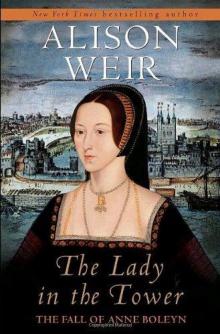 The Lady in the Tower: The Fall of Anne Boleyn
The Lady in the Tower: The Fall of Anne Boleyn Six Wives of Henry VIII
Six Wives of Henry VIII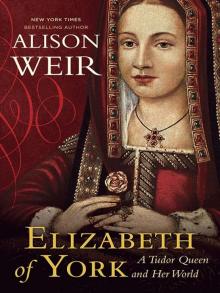 Elizabeth of York: A Tudor Queen and Her World
Elizabeth of York: A Tudor Queen and Her World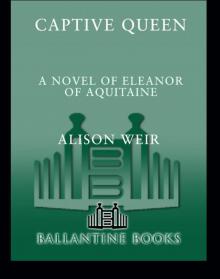 Captive Queen
Captive Queen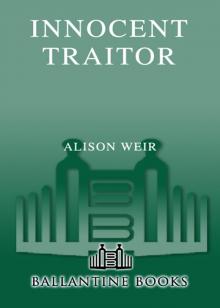 Innocent Traitor
Innocent Traitor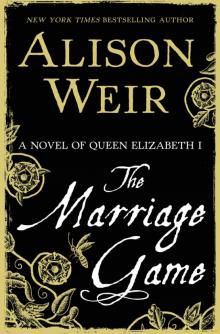 The Marriage Game
The Marriage Game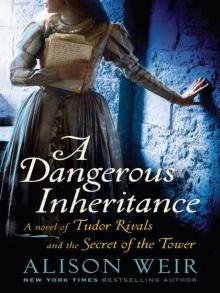 A Dangerous Inheritance
A Dangerous Inheritance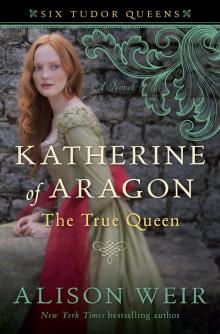 Katherine of Aragón: The True Queen
Katherine of Aragón: The True Queen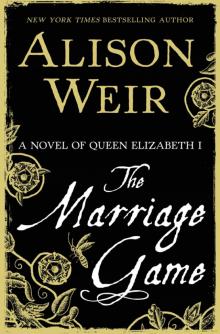 The Marriage Game: A Novel of Queen Elizabeth I
The Marriage Game: A Novel of Queen Elizabeth I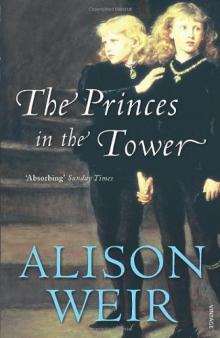 Princes in the Tower
Princes in the Tower Anne Boleyn: A King's Obsession
Anne Boleyn: A King's Obsession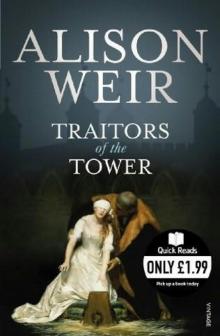 Traitors of the Tower
Traitors of the Tower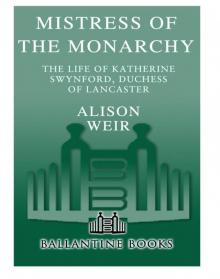 Mistress of the Monarchy: The Life of Katherine Swynford, Duchess of Lancaster
Mistress of the Monarchy: The Life of Katherine Swynford, Duchess of Lancaster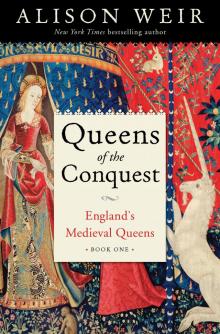 Queens of the Conquest: England’s Medieval Queens
Queens of the Conquest: England’s Medieval Queens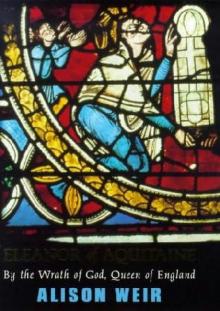 Eleanor of Aquitaine: A Life
Eleanor of Aquitaine: A Life Mary, Queen of Scots, and the Murder of Lord Darnley
Mary, Queen of Scots, and the Murder of Lord Darnley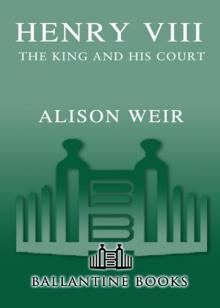 Henry VIII: The King and His Court
Henry VIII: The King and His Court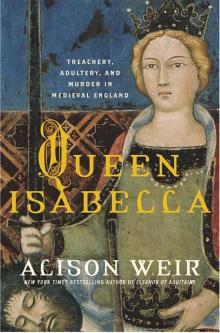 Queen Isabella: Treachery, Adultery, and Murder in Medieval England
Queen Isabella: Treachery, Adultery, and Murder in Medieval England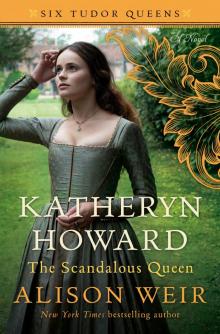 Katheryn Howard, the Scandalous Queen
Katheryn Howard, the Scandalous Queen Arthur- Prince of the Roses
Arthur- Prince of the Roses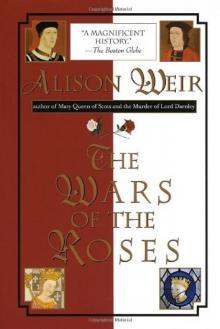 The Wars of the Roses
The Wars of the Roses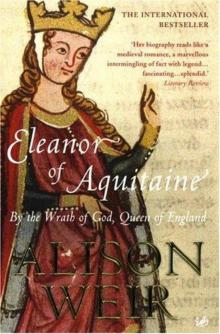 Eleanor of Aquitaine: By the Wrath of God, Queen of England
Eleanor of Aquitaine: By the Wrath of God, Queen of England Mary Boleyn: The Great and Infamous Whore
Mary Boleyn: The Great and Infamous Whore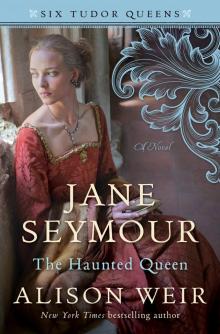 Jane Seymour: The Haunted Queen
Jane Seymour: The Haunted Queen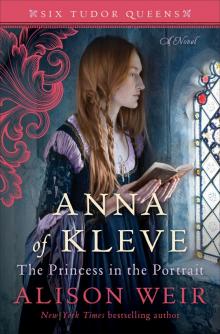 Anna of Kleve, the Princess in the Portrait
Anna of Kleve, the Princess in the Portrait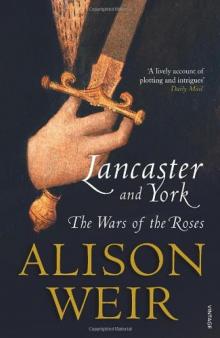 Lancaster and York: The Wars of the Roses
Lancaster and York: The Wars of the Roses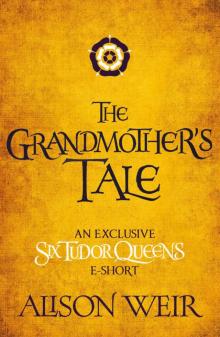 The Grandmother's Tale
The Grandmother's Tale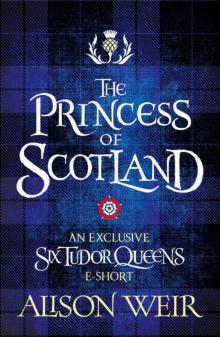 The Princess of Scotland (Six Tudor Queens #5.5)
The Princess of Scotland (Six Tudor Queens #5.5)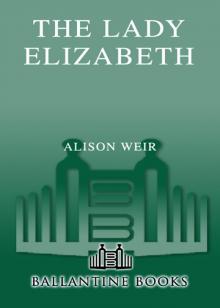 The Lady Elizabeth
The Lady Elizabeth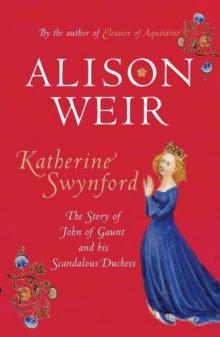 Katherine Swynford: The Story of John of Gaunt and His Scandalous Duchess
Katherine Swynford: The Story of John of Gaunt and His Scandalous Duchess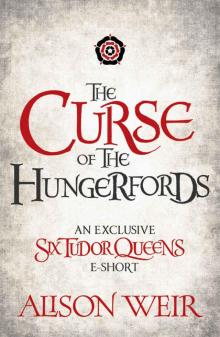 The Curse of the Hungerfords
The Curse of the Hungerfords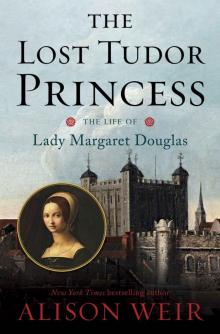 The Lost Tudor Princess: The Life of Lady Margaret Douglas
The Lost Tudor Princess: The Life of Lady Margaret Douglas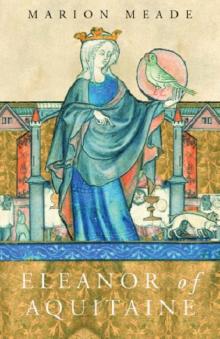 Eleanor of Aquitaine
Eleanor of Aquitaine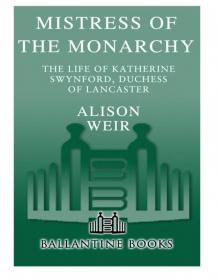 Mistress of the Monarchy
Mistress of the Monarchy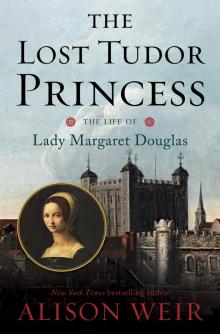 The Lost Tudor Princess
The Lost Tudor Princess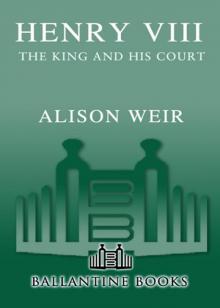 Henry VIII
Henry VIII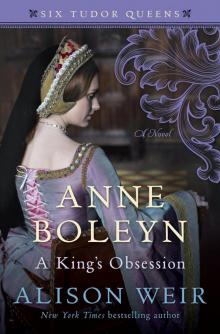 Anne Boleyn, a King's Obsession
Anne Boleyn, a King's Obsession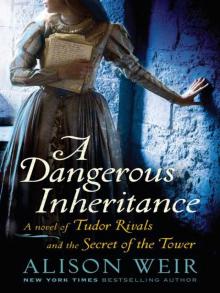 A Dangerous Inheritance: A Novel of Tudor Rivals and the Secret of the Tower
A Dangerous Inheritance: A Novel of Tudor Rivals and the Secret of the Tower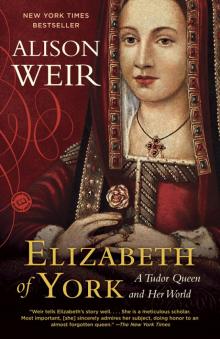 Elizabeth of York
Elizabeth of York Katherine of Aragon, the True Queen
Katherine of Aragon, the True Queen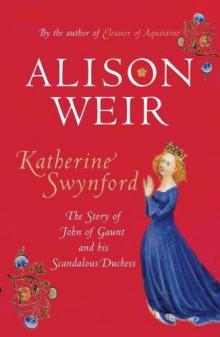 Katherine Swynford
Katherine Swynford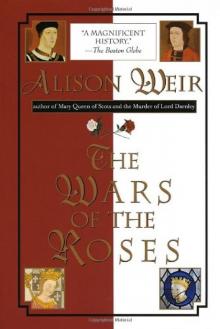 Wars of the Roses
Wars of the Roses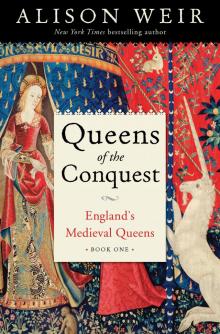 Queens of the Conquest
Queens of the Conquest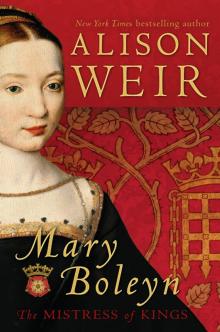 Mary Boleyn
Mary Boleyn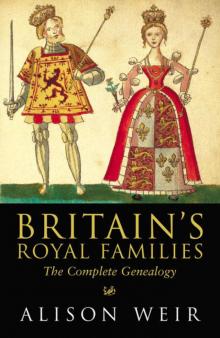 Britain's Royal Families
Britain's Royal Families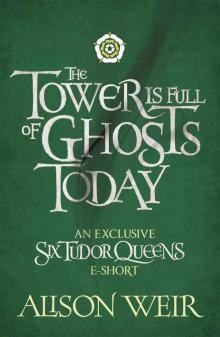 The Tower Is Full of Ghosts Today
The Tower Is Full of Ghosts Today Life of Elizabeth I
Life of Elizabeth I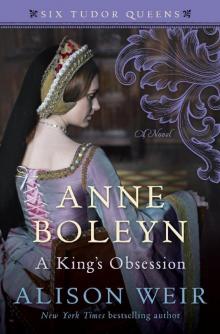 Anne Boleyn A King's Obssession
Anne Boleyn A King's Obssession Lancaster and York
Lancaster and York Jane Seymour, the Haunted Queen
Jane Seymour, the Haunted Queen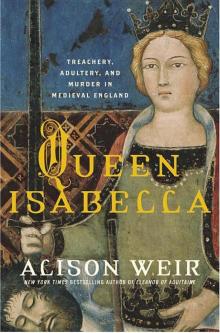 Queen Isabella
Queen Isabella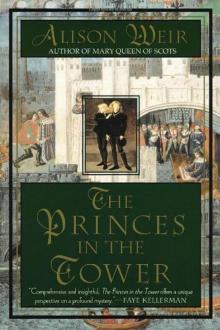 The princes in the tower
The princes in the tower